-
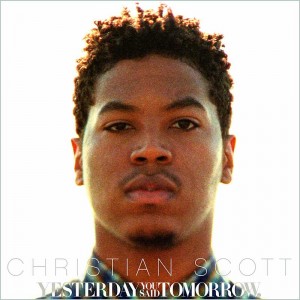 Note :
Note : 


 ++
++
http://www.christianscott.net
http://www.myspace.com/christianscottmusic
Sortie : 2010
Style : New Jazz , Electro Jazz
Tracklist :
1. K.K.P.D.
2. The Eraser
3. After All
4. Isadora
5. Angola, LA & The 13th Amendment
6. The Last Broken Heart (Prop 8)
7. Jenacide (The Inevitable Rise And Fall Of The Bloodless Revolution)
8. The American't
9. An Unending Repentance
10. The Roe Effect (Refrain In F# Minor)

Découvrez la playlist Christian Scott - Yesterday You Said Tomorrow (2010)
Neveu du saxophoniste Donald Harrison, Christian Scott s’affirme comme un trompettiste de jazz avec lequel il faut compter. Ce quatrième enregistrement pour Concord est son plus abouti. « C’est la première fois que je travaille aussi dur sur un album » confie-t-il dans le dossier de presse qui l’accompagne. Enregistré par Rudy Van Gelder dans son célèbre studio d’Englewood Cliffs, “Yesterday you Said Tomorrow“ s’ouvre sur un accord de guitare électrique, l’instrument participant à une véritable mise en rythme de la musique. Jamire Williams fouette ses cymbales et martèle ses tambours. Christian Scott esquisse une brève mélodie puis improvise “sous la mitraille“. On est d’emblée séduit par la sonorité chaude et moelleuse de sa trompette. Le souffle se fait souvent chuchotement, le son devient respiration et se rapproche de la voix humaine. « J’essaye d’imiter la voix de ma mère lorsqu’elle chantait » a-t-il déclaré dans un entretien avec un journaliste. La branche d’embouchure inversée du modèle de trompette qu’il utilise, une Getzen Katrina, lui permet d’obtenir une sonorité plus douce. Jenacide repose sur les accords obsédants du piano de Milton Fletcher dont le jeu bluesy et élégant éclaire Isadora, une des ballades de ce nouvel opus, et After Hall semble construit autour de la contrebasse de Kris Funn. On notera le jeu en blockchords du pianiste avant la coda. Le jazz de Christian Scott se nourrit de rock, de funk et de hip-hop. Le trompettiste parvient à fondre toutes ces influences au sein d’une musique qui possède une véritable dimension orchestrale. « J’ai voulu créer une toile de fond musicale faisant référence à la musique des années 60 que j’aimais, le second quintette de Miles Davis, le quartette de John Coltrane, le groupe de Charles Mingus et la musique créé par Bob Dylan et Jimi Hendrix. » Outre The Eraser, une ballade brumeuse de Thom Yorke de Radiohead, seule reprise du disque, certains morceaux ressemblent à des chansons sans paroles, la guitare de Matthew Stevens leur donnant une coloration rock moins prononcée que par le passé. Dans Roe Effect, elle égraine les accords d’un thème chanté par la trompette. Le disque bénéficie également d’un important travail sur le son. Dans The Eraser, des objets placés sur les cordes métalliques du piano modifient sa sonorité. Une guitare volontairement sale, brouillée comme les ondes d’un émetteur radio, introduit An Unending Repentance. Soigneusement arrangé, “Yesterday you Said Tomorrow“ s’ouvre à des métriques inattendues (plusieurs types de mesures cohabitent parfois au sein d’un même morceau) et innove sur le plan du rythme. Le jazz bouge et Christian Scott est de ceux qui le font évoluer.
Par Pierre de Chocqueusepermalink
-
 Note :
Note : 

 ++
++
Style : World , Music Ethiopia
Tracklist :
1 Bezawork Asfew - T'zeta
2 Mahmoud Ahmed - Tezeta
3 Mulatu Astatqe - Tezeta
4 Sèyfou Yohannès - Tezeta
5 Menelik Wèsnatchèw - Tezeta
6 Either/Orchestra - Soul Tezeta
7 Tèsfa-Maryam Kidané - Tezeta
8 Mahmoud Ahmed - Tezeta, long version
9 Gétatchèw Kassa - Tezeta, slow
10 Gétatchèw Kassa - Tezeta, fast

Do you know that 1989 BBC double CD, 'Under African Skies'? When it first came to my ears I was blown away by one song specially. It is the last track on the album but it made an incredible impression. The voice of Bezawork Asfew is the most extraordinary, first time I heard it, it sent shivers down my spine, spontaneous goosebumps, tears, words can't express how that felt, ever since I've been looking around to find her music. All paths seem to lead to the CD this track comes from. If anyone can help us to find something, anything she made, that would be super. With the help of the great series on Buda Musique, 'éthiopiques', I made a compilation of different versions of 'T'zeta' or 'Tezeta', a traditional that practically all Ethiopian musicians seem to have played, listen. After receiving all your tips, it seemed appropriate to post this fantastic Youtube movie, thank you very very much for enlightening me !!!
permalink
Thanks : http://globalgroovers.blogspot.com
-
 Note :
Note : 




Sortie : 2006
Style : Jazz World , Piano
Tracklist :
01 The Homeless Wanderer
02 The Last Tears of a Deceased
03 A Young Girl’s Complaint
04 The Mad Man’s Laughter
05 Presentiment
06 Mother’s Love
07 Ballad of the Spirits
08 The Song of the Sea
09 Homesickness
10 Golgotha
11 The Jordan River Song
12 The Garden of Gethesemanie
13 The Song of Abayi
14 The Story of the Wind
15 Evening Breeze
16 Tenkou! Why Feel Sorry?
 Une pianiste éthiopienne qui a enregistré des disques dans les années 60, ça vous dit quelque chose ? Si oui, bravo ! Moi, je ne connaissais pas, mais je me réjouis de combler cette ignorance. En 1963, Tsegue Maryam Guebrou avait 40 ans. Elle était issue de la haute société d’Addis-Abeba... La suite de l’histoire est à reconstituer via internet, si vous le souhaitez. Mais vous pouvez aussi laisser votre imagination inventer les choses. Ecoutez le morceau ci-joint, une composition personnelle, “The homeless wonderer”, une petite merveille qui ne ressemble à rien d’autre pour moi. Et dieu sait que je suis fan de piano solo ! Elle a le genre de phrasé qui vous enveloppe les jours où il fait trop gris et trop froid pour faire autre chose que de se draper dans une couverture avec un thé à portée de main. Bien aussi quand le soleil tape si dur que l’on se sent anesthésié. Bref. À écouter sous toutes les latitudes.
Une pianiste éthiopienne qui a enregistré des disques dans les années 60, ça vous dit quelque chose ? Si oui, bravo ! Moi, je ne connaissais pas, mais je me réjouis de combler cette ignorance. En 1963, Tsegue Maryam Guebrou avait 40 ans. Elle était issue de la haute société d’Addis-Abeba... La suite de l’histoire est à reconstituer via internet, si vous le souhaitez. Mais vous pouvez aussi laisser votre imagination inventer les choses. Ecoutez le morceau ci-joint, une composition personnelle, “The homeless wonderer”, une petite merveille qui ne ressemble à rien d’autre pour moi. Et dieu sait que je suis fan de piano solo ! Elle a le genre de phrasé qui vous enveloppe les jours où il fait trop gris et trop froid pour faire autre chose que de se draper dans une couverture avec un thé à portée de main. Bien aussi quand le soleil tape si dur que l’on se sent anesthésié. Bref. À écouter sous toutes les latitudes.
permalink
The 21st volume in the grand Ethiopiques series (that reflects how deeply the country's popular music traditions are steeped in American and European colonial sources) is dedicated to the solo piano works of the outstanding composer and performer Emahoy Tsegué-Maryam Guèbrou, a daughter of Ethiopian high society who chucked it all to become a nun in the nation's Orthodox Church. Tsegué-Maryam Guèbrou was educated in Europe. She played violin (under the tutelage of Polish émigré Alexander Kontorowicz). She took up her piano studies while in the convent and teaching at an orphanage. Her first recordings -- two LPs -- were issued in 1963, when she was 40. The first nine cuts here come from these two albums. Guèbrou showcased her classical training on much of the first offering. But the opening cut also displays her incredible ability to play an extremely melodic blues piano as read through the great jazz masters of the instrument. One can hear a bit of Albert Ammons, a bit of Count Basie and Oscar Peterson, and even a trace of Art Tatum in "The Homeless Wanderer." She sticks to her wonderfully haunting classical compositions until "Presentiment" (track five), where she returns to the deep blues, which are nonetheless played light and airy in the middle and upper registers of the piano. Jazz injects itself deeply into her playing on the second recording, beginning with "Mother's Love." There is a spaciousness in her playing that is remarkable, and it is very much like song. "Ballad of the Spirits" may be an obvious example, but it is far from the only one. Her sense of phrasing is rhythmically complex; she shape-shifts, straying from standard time signatures into something more mercurial without losing form. On this tune one can hear Beethoven and Teddy Wilson. "The Song of the Sea" is the longest composition here. Clocking in at just under nine and a half minutes, it is complex yet utterly engaging. Here, scalar forms and ostinati assert themselves in the theme, which returns over and over again throughout. But the improvisation on the original changes is remarkable; it feels as if the piece is in three movements, and a different kind of improvisation is featured in each. The harmonic invention and the melodic interplay between her hands are seductive. There are three other tracks here from an album Guèbrou recorded in 1970 while in Jerusalem on pilgrimage. These, "Golgatha," "The Jordan River Song," and "The Garden of Gethesemanie," are among the strongest works here. Even as they engage classical themes, especially on "Golgatha," the early jazz of Fats Waller and Jelly Roll Morton is whispered into the body of these compositions. The final four cuts here come from an album issued in 1996 while she was living in the convent. These four pieces are evidence of the complete realization of her craft. Guèbrou's meld of blues, classical, and gospel music filtered through a jazz pianist's sense of time and voicings is unlike anything anyone has ever heard. It's ethereal yet rooted in the Ethiopian Orthodox sung tradition; it's gauzy and fluid, yet worldly in its command of the musical languages she has chosen to display. It's precise and ordered, yet unfettered and free to drift. It feels like songs of praise, prayer, charming conversation, and partying all rolled into a single exquisite voice that contains many. Fans of Abdullah Ibrahim's township-informed solo work will find this set intoxicating and irresistible, yet she sounds nothing like him, or anyone else. The Ethiopiques series has unearthed other soloists, but this volume stands out for its lyricism, its mysterious emotional depth, and its utter musical mastery.
Thom Jurek, All Music Guide
permalink
-
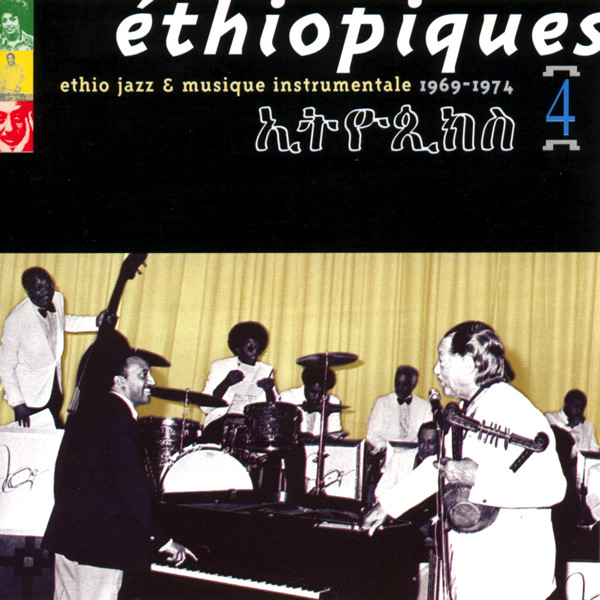 Note :
Note : 




http://www.myspace.com/mulatuastatke
Sortie : 1998
Style : Jazz World , Music Ethiopienne
Tracklist :
1 Yèkèrmo Sèw (A Man of Experience and Wisdom) (4:15)
2 Mètché Dershé (When Am I Going to Reach There?) (4:00)
3 Kasalèfkut Hulu (From All the Time I Have Passed) (2:45)
4 Tezeta (Nostalgia) (6:16)
5 Yègellé Tezeta (My Own Memory) (3:18)
6 Munayé (My Muna) (5:03)
7 Gubèlyé (My Gubel) (4:40)
8 Asmarina (My Asmara) (4:58) by Fèqadu Amdè-Mesqel 9 Yèkatit (February) (3:57)
10 Nètsanèt (Liberty) (5:36)
11 Tezetayé Antchi Lidj (Baby, My Unforgettable Remembrance) (6:04)
12 Sabyé (My Saba) (5:28)
13 Ené Alantchi Alnorem (I Can't Live Without You) (5:02) by Girma Hadgu
14 Dèwèl (Bell) (4:16)
Line Up :
* Mulatu Astatke - Arranger, Keyboards
* Fedadu Made-Mesqel - Flute, Tenor Sax
* Mogus Habte - Tenor Sax
* Yohannes Tekolla - Trumpet
* Felleque Kindane - Guitar
* Andrew Wilson - Guitar
* Tekle “Huket” Adhanom - Guitar
* Giovanni Rico - Bass
* Tesfaye “Hodo” Mekonnen - Drums
* Girma Zemaryam - Drums
* Temare Haregu - Drums
 Découvrez la playlist Ethiopiques Vol. 04Musically trained in London and schooled in the club scene of mid-’60s New York, Mulatu Astatke stands as the exceptional musical innovator of the Ethiopian groove. Starting in 1969, he created the first bands independent of the military, which had previously dominated the country’s music scene. Having immersed himself in Caribbean music, funk, jazz and Latin grooves during his lengthy stint abroad, Mulatu returned to his native land to give rise to a brand new sound. An album of instrumentals, Ethiopiques Volume 4 is a case study in the inventive blending of influences that comprised the Ethiopian groove. Strains of funk and reggae timings permeate the thick and chunky bass lines, which are pushed prominently forward in the mix. Multiple saxophones swirl with the hypnotic, snake-charming sounds of the East, while at the same time resonating with jazzy tones reminiscent of John Coltrane and Lester Young. Guitar is a main ingredient here, growling with funky distorted wah-pedaled fuzz riffs that sound like they were lifted straight out of an early ’70s black-exploitation flick. Drums and percussion combine the punchy funk of James Brown and the Meters with the heavy Latin rhythms of Mongo Santamaria and Willie Bobo. Fusing all of these elements together, Mulatu unleashes a potent brew of afro-jazz grooves that pull you in and leave you in a mystical trance-like state. Whew! Even when the record stops, these mood-inspiring sounds linger on like a drug. Get your head on right, light a candle, sit back, and you too will understand… Tropical in its roots, funky and intoxicating in its impact, Mulatu Astatke’s distinct brand of Ethiopian music features some of the most soulful hip-grinding instrumentals ever recorded in Mother Africa.
Découvrez la playlist Ethiopiques Vol. 04Musically trained in London and schooled in the club scene of mid-’60s New York, Mulatu Astatke stands as the exceptional musical innovator of the Ethiopian groove. Starting in 1969, he created the first bands independent of the military, which had previously dominated the country’s music scene. Having immersed himself in Caribbean music, funk, jazz and Latin grooves during his lengthy stint abroad, Mulatu returned to his native land to give rise to a brand new sound. An album of instrumentals, Ethiopiques Volume 4 is a case study in the inventive blending of influences that comprised the Ethiopian groove. Strains of funk and reggae timings permeate the thick and chunky bass lines, which are pushed prominently forward in the mix. Multiple saxophones swirl with the hypnotic, snake-charming sounds of the East, while at the same time resonating with jazzy tones reminiscent of John Coltrane and Lester Young. Guitar is a main ingredient here, growling with funky distorted wah-pedaled fuzz riffs that sound like they were lifted straight out of an early ’70s black-exploitation flick. Drums and percussion combine the punchy funk of James Brown and the Meters with the heavy Latin rhythms of Mongo Santamaria and Willie Bobo. Fusing all of these elements together, Mulatu unleashes a potent brew of afro-jazz grooves that pull you in and leave you in a mystical trance-like state. Whew! Even when the record stops, these mood-inspiring sounds linger on like a drug. Get your head on right, light a candle, sit back, and you too will understand… Tropical in its roots, funky and intoxicating in its impact, Mulatu Astatke’s distinct brand of Ethiopian music features some of the most soulful hip-grinding instrumentals ever recorded in Mother Africa.
-
 Note :
Note :



http://www.basisrecords.com/indigo
http://www.myspace.com/indigojamunit
Sortie : 2006
Style : New Jazz
Tracklist :
1. Sakura
2. Car Chase
3. Ibuki
4. Charlie
5. Alert
6. Gekko
7. Spin A Top
8. 2×2.
9. 5 AM

A killer combo from Japan — a club jazz unit that mixes warm, round bass with hard-hitting piano — all held together nicely with two drummers on the bottom, and some very crisp production! The sound is totally great — a stripped-down take on the mix of modal and soul jazz styles that have been coming from some of the Japanese and European club jazz groups of late — and without any horns to get in the way, there’s an added focus on the acoustic bass and heavy drums, which makes for a nicely funky sound overall! These guys are totally great — way better than the “jam unit” name might make you think — steeped in classic jazz roots, but coming across with a very fresh, very contemporary groove. Titles include “Car Chase”, “Ibuki”, “Charlie”, “Alert”, “Gekko”, “Spin A Top”, “2 X 2″, and “5AM”.
permalink
-
 Note :
Note : 




Style : Classique
Tracklist :
(1) Alexandre BORODINE
Danses Polovtsiennes du « Prince Igor »
(2) Modeste MOUSSORGSKY
Une Nuit sur le Mont-Chauve
(3) Piotr Ilitch TCHAIKOVSKY
Roméo et Juliette, ouverture-fantaisie
Igor Markevitch
Orchestre National de la Radiodiffusion Française
Choeurs de la Radiodiffusion Française (1)
(chef des choeurs : René Alix)
Enregistré à Paris (Salle de la Mutualité),
les 10-11 mars 1954 (1, 3) et le 15 mars 1954 (2)

Vous remarquerez que les parties chorales des Danses Polovtsiennes sont chantées en français par un choeur qui a bien mal vieilli... Markevitch réenregistra les mêmes oeuvres en stéréo quelques années plus tard avec différents orchestres : Roméo et Juliette dès 1959 avec le Philharmonia Orchestra (Columbia) ; les Danses polovtsiennes avec l'Orchestre du Concertgebouw en 1964 (Philips) ; et la Nuit sur le Mont-Chauve avec l'Orchestre du Gewandhaus de Leipzig en 1973 seulement (Eterna). C'est très regrettable que cette anthologie de 1954 n'ait jamais été rééditée en CD -- j'espère me tromper -- car l'Orchestre National sonne merveilleusement bien dans la musique russe à cette époque.
Edition originale : 33t Columbia FCX 349 (France) utilisé pour ce transfert / 33t Columbia 33CX 1208 (UK).
Les célèbrissimes Danses Polovtsiennes ont connu des édition séparées en 45t : Columbia ESBF 151 et ESBF 17039 (France) / SEL 1591 (UK), etc...
permalink
Thanks : http://quartier-des-archives.blogspot.com
-
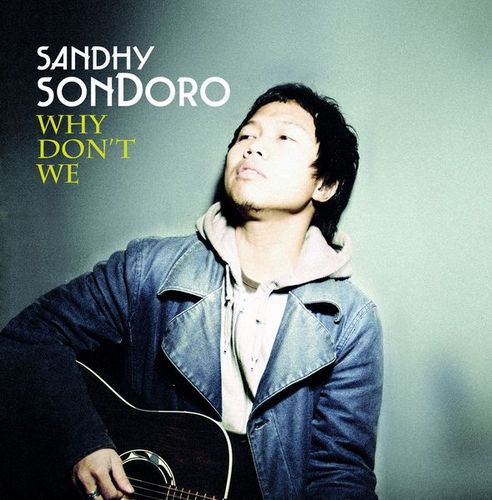 Note :
Note : 

 ++
++
http://sandhysondoro.net
http://www.myspace.com/sandhysondoro
Sortie : 2008
Style : Folk , Rock , Pop
Tracklist
1. Why Don't We
2. Superstar - How Could We Not Love
3. End Of The Rainbow
4. You And I
5. In The Name Of Peace
6. Down On The Streets
7. I Don't Know Where
8. An Unordinary Lovely Friend
9. People (Shall We Live For Money)
10. Last Dance With You
11. That's The Way
12. Don't Let It Bring You Down

His name might not be familiar to all, but 36-year-old Sandhy Sondoro has made remarkable achievements in music, putting Indonesia on the international stage by winning New Wave 2009, a contest for young pop singers. Music has been part of Sandhy Sondoro's life since he was a little boy. His mother was in band made up of co-workers from her office; his cousin, Ira Maya Sopha, was a famous child singer during the 1970s. Sandhy, born in 1973, listened to different kinds of music, ranging from American pop, to folk, jazz and the blues; in particular, he adored The Beatles, Michael Jackson and Neil Young. Yet his music career began unexpectedly and unplanned, while he was in Germany. He went to Germany to study architecture after he graduated from high school in Jakarta. As he lived alone there and needed to support himself, he was on the lookout for a job. "I was a singer in a uni band but we rarely appeared on stage, so I couldn't rely on the band to make more money," Sandhy says. He did have the opportunity to work in a supermarket, and headed there by bike. "But I didn't get *the job* because I was late," he says. "On my way back to my apartment, I saw a busker on the street. I thought, *Well, being a busker was a good idea.'" He approached the busker to ask if he could join him in singing on the streets. The busker agreed. "So I borrowed my friend's guitar and played on the streets. We got about 50 deutschemarks in an hour and we shared the money," he says. "That wasn't bad." They played three times a week before he decided to go it alone. "The money was enough to pay the rent or buy materials for my studies," he says, adding he also busked on subways. But he wasn't destined to remain a busker forever. He started to write more songs and played in some gigs in Berlin with his band. His voice made him stand out. Greatly infl uenced by African-American musicians such as Ray Charles and BB King, renowned for their powerful voices, Sandhy often takes people by surprise with his soulful voice. Should you hear his voice without knowing anything about him, you might even guess that he is an African-American singer because the way he sings is so "black". That he is Indonesian surprises many who hear his voice first. He interprets all kinds of songs, such as Percy Sledge's classic "When A Man Loves A Woman", in his own distinctive style. "I'm a big fan of African-American musicians with their blues and soul music. I always sing songs the way I want to sing them, with my own character," he says, adding that if the legendary BB King happened to drop by one day, he would be delighted to write a song with him. He developed as a self-described "all-round musician", spending many years jamming with musicians in jazz bars in Berlin and other cities in Europe. Recognizing his great talent, some African-American musicians in Berlin encouraged Sandhy to take the next step and make his breakthrough. His talents began to attract wider attention when he took part in a talent show, created by prominent entertainer Stefan Raab, that aired on German TV two years ago. The aim of the program was to fi nd young musicians. Even though he came fi fth in the fi nal, Sandhy's performance impressed many major German musicians such as Gregor Meyle. His participation in the competition also opened up the way for further opportunities in a number of shows such as House of World Cultures in Berlin. The release of his debut album Why Don't We, in early April 2008 marked Sandhy's entry into the music industry. The album contains 12 songs in English. His first single "Shine", for which he collaborated with duo DJs, Ibiza and Dublex Inc, was soon in the radio charts in major European cities such as Berlin, Madrid and Paris. It was a good start, but Sandhy was not about to rest on his laurels. He continued to try new things, including competing in New Wave, an international music competition for young singers, in Jurmala, Latvia. The annual contest has become an important event in the international music arena because its live concerts on central channels attract millions of spectators and attention from important journalists and media - not to mention the fans, who are impassioned about the event and support the competitors with all their hearts. "It wasn't completely my own idea *to take part in New Wave*. Brandon Stone *music producer* suggested I take part in the competition," he says. "I'm not really the kind of person who is crazy about participating in American Idol-like contests, but I took the opportunity as a way of getting free promotion. Besides, I love Indonesia and I wanted to promote the country at the international level." He had little idea of winning, although he admitted he wanted to. "But in any case, *I thought* I would benefi t from the atmosphere of the contest and from working with professional artists," he says. In the competition, he proudly performed his own song, "End of the Rainbow", for the judges. The song and his performance captured the judges' attention; he ended up sharing fi rst place in New Wave with a Ukrainian singer. The victory gave him the opportunity to realize one of his dreams: to tour the world. "I'd like to share my songs with people *everywhere*, so that they can enjoy my music," Sandhy says. Despite his achievements and international exposure, Sandhy remains a nice person with a great sense of humor. He is certainly not the kind of a singer who becomes a snob just because he has lived and had successes abroad. At the beginning of our recent interview, Sandhy, sporting blue jeans, an orange T-shirt and a scarf, started out quietly, with a little smile on his face. But as time passed, he became more animated and warm, starting to tell some jokes and fooling around. During his spare time, he says, he likes to write songs or watch funny movies. "I like comedy. It really saves my tough days," he says. "My favorite is Benyamin Sueb. He's awesome." Although Sandhy has been living in Germany for years, he has not forgotten his home, and sometimes performs at gigs in Jakarta. He recently accompanied himself on the guitar for a performance of "Bengawan Solo" for the opening of a batik exhibition in a shopping mall. His fans in Indonesia can listen to his soulful voice on an album called Jazz in the City, from Sony Music Indonesia, containing two of his songs, "Malam Biru (Kasihku)" (Blue Night (My Lover)) and "End Of The Rainbow". He will also be working with star Glenn Fredly for the latter's next album. With his music career well on its way, Sandhy freely admits that when he was younger, it never crossed his mind that he might end up earning a living from music. "I used to want to be an architect, you know. Because I like drawing. I sometimes drew comics during class when I was a student," he says. "But I have changed my mind. Being a musician is much simpler. All I have to do is bring my guitar and sing." And he plans to stick with music in the future. "Because I'm a natural born singer. I can't do anything better," he says. "It's what I do best." Ladies and gentleman, let's welcome our very own newborn world singer!
permalink
-
 Note :
Note : 


 ++
++
http://www.myspace.com/metastazmusic
http://www.tazart-music.com
Sortie : 2010
Style : Electro Dub
Tracklist :
1. Ghost & Assassin
2. Simpsong
3. Orient Folk
4. The Emperor
5. Snakes
6. Son Of Light
7. I'm
8. Evil
9. Flames In The Rain
10. Bagdad's Breath
11. Draw Me A Rainbow


Voila bientôt 3 ans que nous n'avions plus entendu les productions de Metastaz. Après le cyber succès de Anekoik Pressure, Thomas Simoës aurait pris le temps d'affiner son style, de cajoler et de fignoler ses productions pour revenir en ce début d'année 2010 avec ce nouvel opus : Orient Dub Express.
Avec une valise déjà bien pleine, Metastaz nous offre ici son 4ème album. Après la parution de electrochoc cérébral, l'Ep Conquest et Anekoik Pressure, le natif de St-Étienne fait quelques apparitions remarqués dans les compilations New (Dub) Excursion et French Dub System en 2008, ainsi qu'une série de concerts, notament en première partie de Fumuj, Zenzile ou encore Fedayi Pacha.
Depuis quelques mois déjà, le retour d'un nouveau live amorce la sortie de l'album Orient Dub Express. Un album qui représente une maturité affirmée par la recherche de nouvelles sonorités et une véritable ouverture concernant les styles musicaux qu'il visite. En effet, si l'album composé de 11 pistes ne décevra en aucun cas les amateurs de dub, car c'est encore ici la véritable base du projet Metastaz, l'artiste révèle un fort interêt pour le hip hop, les sonorités brésiliennes et dynamise ses productions par un renouveau de son pannel instrumental. Certaines pistes comme Son of light et Orient folk témoignent donc de la maîtrise de ce que l'on pourrait appeler le dub metastasis. Mais Metastaz sort ici des terrains battus pour nous révéler ses talents. On remarquera d'ailleurs la très appréciable track Simpsong, en collaboration avec le groupe Brésilien Mamelo Sound System, envoûtante et décalée. À noter aussi les nombreux featuring avec des Mc de talent, Mc Miscellaneous (Fumuj) et Blu Rum 13 (Oneself). Toujours dans le changement, Metastaz redonne de la force à ses compositions grâce à des riffs énergiques et un travail de finitions de longue haleine. Bref, Orient Dub Express mélange les genres avec cohérence et souplesse et ne manque pas de surprendre.
Quant à l'artwork, c'est un travail d'orfèvre que nous offre Stan (www.stan-gd.com), graphiste et v-jay de Metastaz, qui nous a habituée a des illustrations d'une grande qualité.
Un album qui s'annonce donc comme étant un petit coton-tige bien sympathique pour commencer cette année 2010 en beauté ! On compte sur vous pour l'apprécier et n'hésitez pas à le faire partager!
-
 Note :
Note : 




http://spokendub.free.fr/
http://www.myspace.com/braindamagedub
Sortie : 2006
Style : Electro Dub , Dark Electro , Spoken Word
Tracklist :
1. Intro
2. Sterile
3. Fenetres
4. Embolism
5. Mistaken identity
6. Metroconversation
7. Under the ground
8. Mad truth
9. Rahtid
10. The beer mystics last day on the planet
11. Pure scenario
12. Final enclosure

Première fois signée chez Jarring effects, Brain damage est le groupe de dub français qui ose franchir le plus les frontières de son style en y administrant une vision moderne et sans limites. Always Greener démarquait le combo par leur façon émotionnelle d’aborder le dub ; Ashes to Ashes / Dub to Dub montrait une esthétique sonore aboutie avec une nouvelle passion pour le spoken word (et les textes de Black Siffichi, désormais passé pour référence du genre). Dans Spoken Dub Manifesto, le duo assume totalement cette nouvelle orientation avec pour seul fil conducteur : le dub poetry. La pléiade d’invité offre au concept une grande richesse, d’une part due à la liberté narrative des intervenants, et d’autre part, par les expérimentations que les musiciens ont bâti. Nombreux instruments (Guitare, duduk, ney, vibraphones) ont été utilisés pour la création des samples, remodelés et réinjectés autour des narrations et de la basse. Les prestations sont multiples et personnelles. Entre le style dénonciateur de Black Siffichi, la poésie orientale de Mohammed El Amraoui et le rap brut de Giovanni Marks, Suzanne Thoma adopte la sensualité et la douceur. Pourtant non dépourvue de charme, Emiko Ota préfère, par une approche moins organique et plus directe, faire passer son discours dur avec énergie. Le grand Mark Stewart, sur l’étrange Mad Truth, prête sa voix grésillante au côté d’un sample paradoxal, à la fois simple et complexe, roots et sauvage. Plus sage, le spécialiste des techniques vocales ancestrales, Bart Plantenga, exprime une récitation claire et articulée sur une excellente track évolutive. Avec ce véritable travail de collaborations, Brain damage crée la parfaite osmose entre son univers musicale et les travaux des vocalistes. L’effet apporté est, au départ, étrange et dur à assimiler. Puis, après plusieurs écoutes, tout devient clair et Spoken Dub Manifesto apparaît comme la nouvelle perle du parcours des stéphanois, malgré l’absence de titre phare émo-dub digital, comme Cube Dub a pu l’être sur leur deuxième album. Mais cette petite frustration est totalement annihilée par le plaisir que procure la découverte de toutes les subtilités et finesses de la galette. Il est nécessaire pour le groupe de prendre des risques et de s’entourer de personnalités aux horizons et nationalités différentes, toutes ouvertes aux expérimentations et à cette perception diversifiée de la musique. Décontenançant par sa forme et proche d’une production Wordsoundienne, Spoken Dub Manifesto doit marquer le paysage dub français, et s’imposer comme un simple coup de maître. Chapeau bas Messieurs Brain damage !
Chroniqué par Kiteklat
permalink

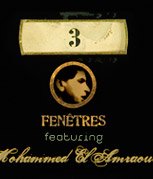
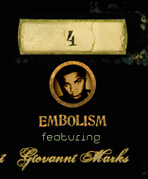



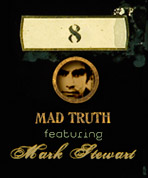



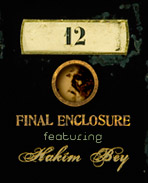
-
Send to Friends | Leave a Comment | Download | Permalink

PLAYLIST :
01 - No Water Please - HLM
http://bbpiratesradio.over-blog.com/article-v-a-mort-aux-ludwig-von-88-44621756.html02 - Rupa & the April Fishes - Espero la luna
http://bbpiratesradio.over-blog.com/article-rupa-the-april-fishes-este-mundo-44643887.html03 - Paso – Joseph
http://bbpiratesradio.over-blog.com/article-v-a-skannibal-party-8-44190277.html04 - The FakeHunters - Mass Transit (feat Leaf Erikson & Asylum7)
http://bbpiratesradio.over-blog.com/article-the-fakehunters-blue-soul-44182772.html05 - La Funk Mob - Motorbass Get Phunked Up
http://bbpiratesradio.over-blog.com/article-la-funk-mob-tribulations-extra-sensorielles-44384314.html06 - Unkle Ho - Bally broad feat. Jane Tyrrell
http://bbpiratesradio.over-blog.com/article-unkle-ho-circus-maximus-44517467.html07 - Rodrigo Campos - Os Olhos Dela
http://bbpiratesradio.over-blog.com/article-rodrigo-campos-s-o-mateus-n-o-e-um-lugar-t-o-longe-assim-44385958.html08 - Mayra Andrade - Poc Li Dente E Tcheu
http://bbpiratesradio.over-blog.com/article-16299879.html09 - B.B. King - The World Gone Wrong
http://bbpiratesradio.over-blog.com/article-b-b-king-one-kind-favor-44315510.html10 - Black Uhuru - Youths Of Eglington
http://bbpiratesradio.over-blog.com/article-black-uhuru-live-1984-44642548.html11 - Laura Vane & The Vipertones - Am I Dreaming
http://bbpiratesradio.over-blog.com/article-laura-vane-the-vipertones-laura-vane-the-vipertones-44185076.html12 - Cymande - Fug
http://bbpiratesradio.over-blog.com/article-cymande-cymande-44324941.html13 - Hindi Zahra - Music
http://bbpiratesradio.over-blog.com/article-hindi-zahra-handmade-44614047.html14 - The Noisettes - So Complicated
http://bbpiratesradio.over-blog.com/article-14580790.html15 - Nitin Sawhney - Breathing Light
http://bbpiratesradio.over-blog.com/article-14567483.html16 - Zeb & Scotty - Bring The Sensi
http://bbpiratesradio.over-blog.com/article-zeb-scotty-bring-di-sensi-dressla-bomb-their-circles-44800891.htmlBABYLON BURNING PIRATES RADI0.1
Freedom MUSIC FOREVER
by DJ DemonAngel
PEACE !!!
Music Lover

![[PLAY]](http://djdemonangel3.podomatic.com/img/play_button.gif)




